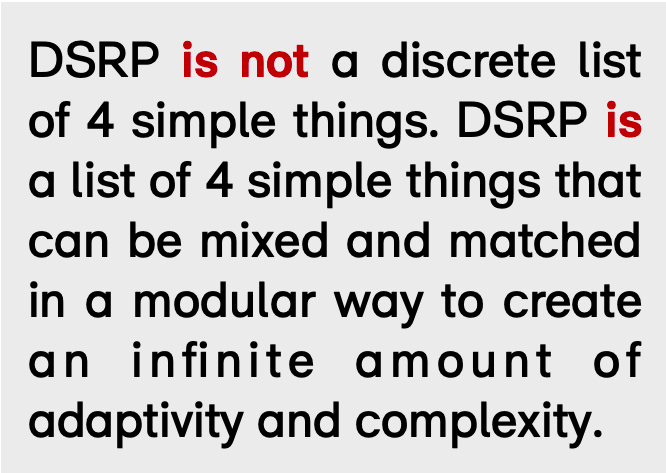Just one thing.
I've taught SystemsThinking/DSRP[1] for a long time...
- I've taught it to scientists, doctoral students, and graduate students.
- I've taught it to high schoolers, teachers of all stripes, grade schoolers, and preschoolers.
- I've taught it to line-level employees in factories, mid-level managers, and in the executive C-suite.
- I've taught it to physical, natural, and social scientists, engineers, legal scholars, MPAs and MBAs.
- I've taught it to farmers and footballers, auto-mechanics, and quantum-mechanics.
- And, I've taught it to novice, intermediate, and expert systems scientists, systems thinkers, and systems practitioners.
As a teacher—as pedagogue and andragogue—it is a profound thing to realize that:
"you can explain things to people but you can't understand things to people."
I've explained what I'm about to tell you thousands of times. And, it is the one thing that is hardest for folks of any stripe to deeply understand, internalize, and put into practice. Yet, it's also the one thing that is most important.
- If I could waive a wand and magically understand just one thing to people...
- If I could alter the cognitive and pedagogical reality and simply "download" an understanding of just one thing into my students' heads...
- If I could find a way, technique, method, strategy, approach, example, activity, or rubric that would work everytime with every student to help them to understand just one thing...
That one thing would be this:

You see, learning the 4 DSRP structures—and its 8 elements—is not the hard part. That can be learned and memorized in ten minutes. The hard part is deeply understanding DSRP's dynamics.
That's it. That's all I got.[2]
- DSRP Theory states that there are four universal patterns that structure information and that structure reality (making identity-other Distinctions (D), organizing part-whole Systems (S); identifying action-reaction Relationships (R); taking point-view Perspectives (P). ↩︎
- Also that it's really not about the 4 D,S,R,P patterns but their elements. But, that's another thing... ↩︎



